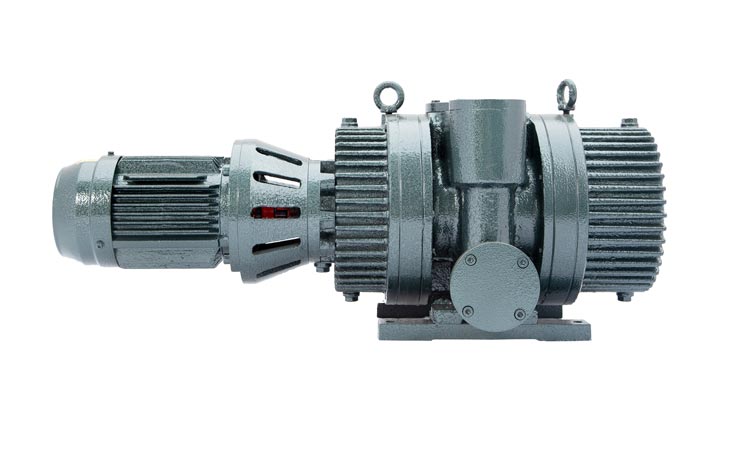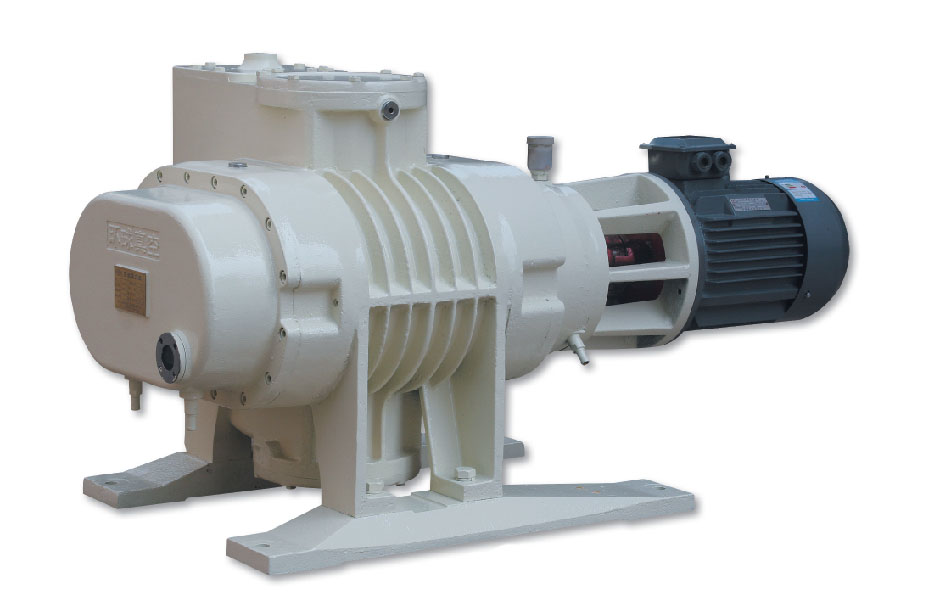Product Description
Single Double Stage Industrial AC DC Liquid Water Cooling Ring Piston Rotary Vane Dry Screw Scroll Roots Air Vakuum Vacuum Pump Replace of Kinney KLRC KT KMBD
Product Description
|
KT Single-Stage Rotary Piston Vacuum Pump |
||||||||||||||||
|
|
• High pumping capacity at high and low pressures Three-cylinder piston design: dynamic balance, almost no vibration • No metal contact between pump pistons The cylinder clearance is full of oil • Quiet operation Application: Heat Treating, Coating, Transformer Drying, Metallurgy, Vacuum packaging, Vacuum furnace, Vacuum coating, Liquid Gas Storage, Brake Fluid Filling, Silicon Crystal Growing, Evacuation
|
|||||||||||||||
|
KLRC Two-stage water-ring vacuum pump |
||||||||||||||||
| Drop down to 4 Torr (5.3 mbar a) • Low-pressure performance limited by steam. The pressure of sealing liquid: water, oil, or process liquid • Provide complete engineering system solutions: Instruments, controls, piping, and valves • Independent liquid recovery and recycling • The central anchor rod is allowed to enter. Pump end without complete disassembly • KLRC75 provides dual mechanical seals Through KLRC525, to meet the requirements of the API pipeline plan. Applications:
|
||||||||||||||||
| Roots pump | ||||||||||||||||
| • High volume of gas at high vacuum (50 Torr to micrometer range) • Can be used with all types of vacuum pumps • Designed to operate in a blank state of 82 dB (A) or less open ground; except for motor and background noise • Heavy-duty drive shafts for direct coupling or Belt Drive Applications • Standard building material: cast iron end plate, the fit of housing and port with nodular cast iron rotor and shaft • Special materials provided » Stainless steel, carbon steel, ductile iron, Bi Protec • Special tests available » Hydrostatic test to 150 PSIG (10.35 bar g), seal leak test, noise test Application:
|
||||||||||||||||
| Single Stage Rotary Vane Pump | ||||||||||||||||
| • Vacuum packaging and food processing technology Thermoforming, blister, air compression, foam forming • Vacuum Adsorption, sling • Vacuum degassing, drying, crystallization, impregnationprecooling • Vacuum pressing, laminating, setting • Vacuum coating and industrial CHINAMFG as the front pump and pre-pump two
|
||||||||||||||||
| Two Stage Rotary Vane Pump | ||||||||||||||||
| • Electronics, semiconductor, and coating industries Vacuum oven, sapphire furnace, polycrystalline furnace, single crystal furnace, vacuum dewatering furnace, vacuum sintering furnace, etc.; Optical coating, ion plating, sputtering equipment; Plasma cleaning; As the front auxiliary pump of Roots pump, diffusion pump, molecular pump, etc. • Various analytical instruments Spectrometer, spectrometer, physical and chemical analyzer, leak detector, glove box, etc. • Medical Industry Plasma sterilizer, vacuum CHINAMFG drying, etc. • Refrigeration industry Automatic evacuation lines of air conditioners, refrigerators, and compressors, refrigerant injection machines, helium leak detection series, etc |
Comparison of replacement models
|
Our Model |
Kinney’s Model |
|
Our Model |
Kinney’s Model |
|
TWO STAGE WATER-RING VACUUM PUMP |
SINGLE STAGE ROTARY PISTON VACUUM PUMP |
|||
|
LP40 |
KLRC100 |
PP70 |
KT150 |
|
|
LP55 |
KLRC125 |
PP150 |
KT300 |
|
|
LP75 |
KLRC200 |
PP70B |
KT150(here are differenets from shape and oil channel design) |
|
|
LP115 |
KLRC300 |
ROOTS PUMP |
||
|
LP200 |
KLRC525 |
VP200 |
KMBD540 |
|
|
|
|
VP600 |
KMBD2000 |
|
Company Profile
The main products are water ring vacuum pumps (including 2BV series, 2BE1 series, 2BE3 series, 2SK series, SK series), rotary vane vacuum pumps (2X series, XD series), roots vacuum pumps, screw vacuum pumps, reciprocating vacuum pumps, vacuum pump stations, vacuum units and accessories, vacuum complete equipment, etc. According to different types of vacuum pumps and different production process requirements of customers, there are also many kinds of materials, mainly including cast iron, stainless steel 304, stainless steel 316, stainless steel 316L, etc. The material quality of non proud products is guaranteed. If the product has quality problems, it will be replaced within 3 months and guaranteed for 1 year. 1. Special materials, specifications and requirements can be customized through negotiation between the supplier and the demander. 2. Provide design, processing, sales and maintenance of vacuum units and complete vacuum equipment. 3. The price will fluctuate due to different product requirements, specifications and materials. The above prices are only for reference. We will provide a suitable design scheme and quotation for your vacuum system according to your specific requirements,
| After-sales Service: | 5 Years |
|---|---|
| Warranty: | 5 Years |
| Oil or Not: | Optional |
| Structure: | Rotary Vacuum Pump |
| Exhauster Method: | Entrapment Vacuum Pump |
| Vacuum Degree: | Vacuum |
| Samples: |
US$ 999/Piece
1 Piece(Min.Order) | |
|---|

How Do Roots Vacuum Pumps Affect the Efficiency of Vacuum Systems in Various Industries?
Roots vacuum pumps have a significant impact on the efficiency of vacuum systems across various industries. Here’s a detailed explanation:
1. Enhanced Vacuum Level:
– High Pumping Speed: Roots vacuum pumps are known for their high pumping speed, which refers to the rate at which they can evacuate gas from a system. By quickly removing gas molecules, these pumps help achieve and maintain a lower pressure, resulting in an enhanced vacuum level within the system. This increased vacuum level is crucial in industries such as semiconductor manufacturing, where precise control of pressure is necessary for optimal processing conditions.
– Improved Evacuation Time: With their rapid gas pumping capability, Roots vacuum pumps significantly reduce the evacuation time required to reach the desired vacuum level. This efficiency is particularly important in industries where time-sensitive processes are involved, such as vacuum drying, degassing, or impregnation, allowing for faster production cycles and increased productivity.
2. Increased Throughput:
– Continuous Operation: Roots vacuum pumps are designed for continuous operation, enabling uninterrupted gas removal from the vacuum system. Their robust construction and oil-free operation make them reliable and suitable for demanding industrial applications. The ability to maintain a consistent vacuum level without frequent stops or downtime contributes to increased system throughput and overall efficiency.
– Handling Large Volumes: Roots pumps are capable of handling large gas volumes due to their displacement principle. This makes them well-suited for industries that require the evacuation of substantial amounts of gas, such as in chemical processing, pharmaceutical manufacturing, or vacuum packaging. By efficiently evacuating large volumes of gas, Roots vacuum pumps facilitate higher production rates and improved process efficiency.
3. Improved Process Control:
– Stable Vacuum Level: Roots vacuum pumps help maintain a stable vacuum level within the system, which is essential for precise process control. By swiftly removing gas molecules, these pumps prevent pressure fluctuations and ensure a consistent environment for various manufacturing processes. This is particularly crucial in industries like thin film deposition, where maintaining a stable vacuum is crucial for achieving uniform coating thickness and quality.
– Reduced Contamination: Roots vacuum pumps operate without lubricating oil in the pumping chamber, minimizing the risk of oil contamination in the vacuum system. This is particularly advantageous in industries such as electronics, semiconductor fabrication, or research laboratories, where even trace amounts of contaminants can adversely affect product quality or experimental results. By providing clean and oil-free vacuum, Roots pumps contribute to improved process control, reduced yield loss, and enhanced product reliability.
4. Energy Efficiency:
– Lower Power Consumption: Roots vacuum pumps are designed to operate efficiently, consuming lower power compared to other types of vacuum pumps. This energy efficiency is beneficial in industries where vacuum systems are continuously operated, such as in chemical processing plants or industrial manufacturing facilities. By reducing power consumption, Roots pumps help lower operational costs and contribute to sustainable and environmentally friendly practices.
– Heat Dissipation: Roots pumps generate less heat during operation compared to certain other vacuum pump types. This is advantageous in industries where temperature control is critical, such as in semiconductor fabrication or vacuum furnaces. The reduced heat generation minimizes the need for additional cooling measures, improving overall energy efficiency and reducing operational costs.
In summary, Roots vacuum pumps significantly impact the efficiency of vacuum systems in various industries. They enhance the vacuum level, increase system throughput, improve process control, and contribute to energy savings. By providing high pumping speed, quick evacuation time, continuous operation, stable vacuum levels, reduced contamination risk, lower power consumption, and efficient heat dissipation, Roots vacuum pumps play a crucial role in optimizing the performance and productivity of vacuum systems across industries.

How Do Roots Vacuum Pumps Differ from Other Types of Vacuum Pumps?
Roots vacuum pumps, also known as Roots blowers or rotary lobe pumps, have distinct characteristics that set them apart from other types of vacuum pumps. Here’s a detailed explanation of the differences between Roots vacuum pumps and other common types of vacuum pumps:
1. Operating Principle: Roots vacuum pumps operate based on the principle of positive displacement. They use synchronized rotating lobes to trap and compress gas, resulting in the creation of a pressure differential that generates vacuum. Other types of vacuum pumps, such as rotary vane pumps, liquid ring pumps, and diffusion pumps, operate on different principles, such as rotor rotation, liquid sealing, or molecular diffusion.
2. Pumping Mechanism: Roots vacuum pumps are non-contacting pumps, meaning there is no physical contact between the lobes or between the lobes and the housing. This eliminates the need for lubrication within the pump and reduces the risk of contamination or oil vapor backstreaming into the vacuum system. In contrast, many other types of vacuum pumps rely on a sealing mechanism that involves physical contact between moving parts, requiring lubrication to maintain proper operation.
3. Pumping Speed: Roots vacuum pumps are known for their high pumping speed, which refers to the rate at which they can remove gas from a vacuum system. They excel at handling large volumes of gas efficiently. This makes Roots vacuum pumps suitable for applications that require rapid evacuation or continuous extraction of gases. Other types of vacuum pumps may have different pumping speeds depending on their design and intended applications.
4. Vacuum Level: While Roots vacuum pumps are efficient at generating rough vacuum levels, typically in the range of 10 to 1,000 mbar, they are not capable of achieving high vacuum levels on their own. They are often used in conjunction with other vacuum pumps, such as rotary vane pumps or diffusion pumps, in hybrid or combination pumping systems to achieve higher vacuum levels. In contrast, other types of vacuum pumps, such as turbomolecular pumps or cryogenic pumps, are designed specifically for achieving and maintaining high vacuum levels.
5. Gas Handling: Roots vacuum pumps have a large gas handling capacity and can handle a wide range of gases, including clean air, corrosive gases, and vapors. Their robust construction and ability to handle gas with particulates or liquids make them suitable for applications in various industries. Other types of vacuum pumps may have limitations in terms of the types of gases they can handle or may require additional equipment or treatments to handle specific gases.
6. Applications: Roots vacuum pumps find applications in a wide range of industrial processes, including chemical processing, pharmaceuticals, food processing, environmental technology, semiconductor manufacturing, packaging, and research laboratories. Other types of vacuum pumps, such as turbomolecular pumps, cryogenic pumps, or scroll pumps, may be more commonly used in specific industries or applications where their unique operating principles or capabilities are advantageous.
It’s important to note that the selection of a vacuum pump depends on various factors, including the desired vacuum level, gas composition, pumping speed requirements, application-specific considerations, and budget constraints. Different types of vacuum pumps offer distinct advantages and are chosen based on the specific requirements of the application.
In summary, Roots vacuum pumps differ from other types of vacuum pumps in terms of their operating principle, pumping mechanism, pumping speed, vacuum level capabilities, gas handling capacity, and applications. Understanding these differences helps in selecting the most suitable vacuum pump for a particular industrial process or application.


editor by CX 2023-10-26